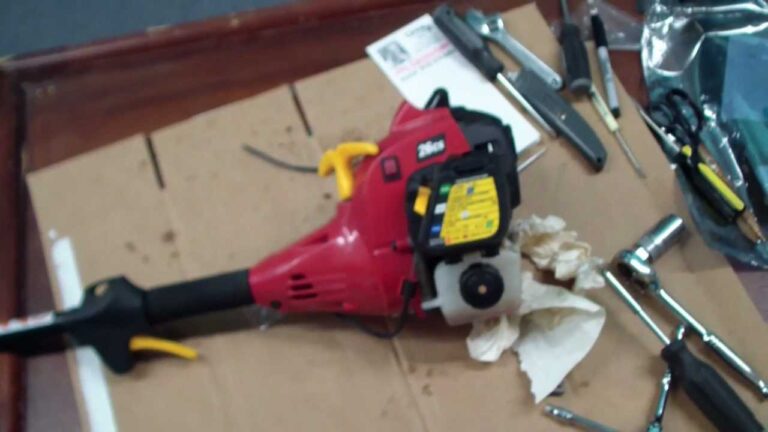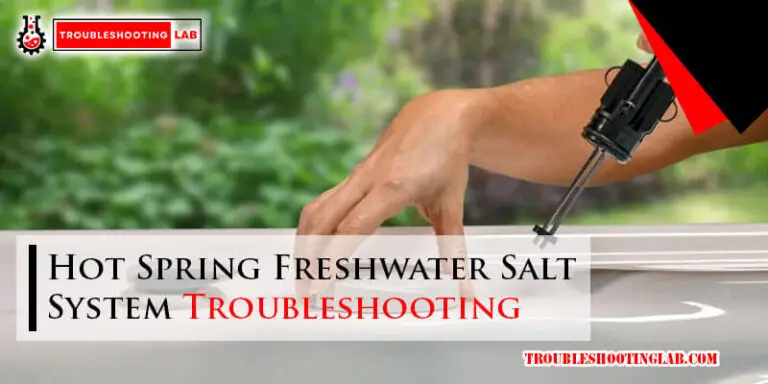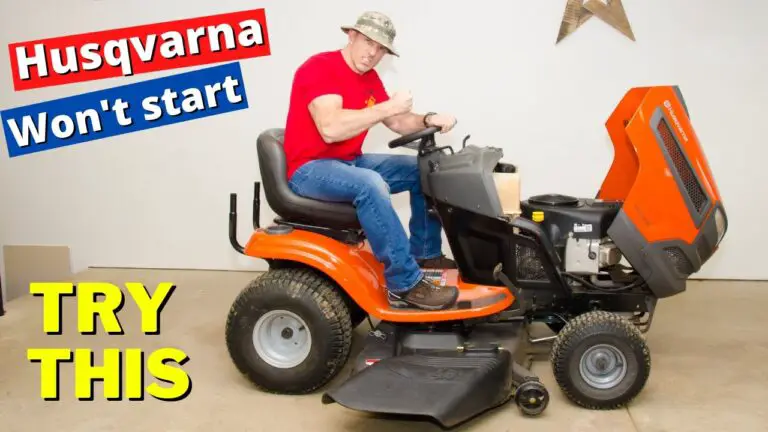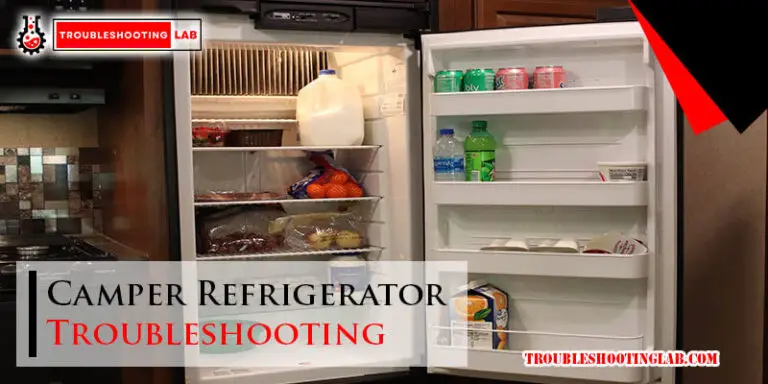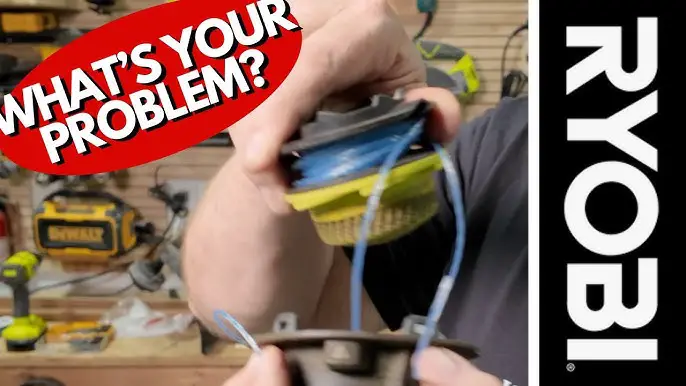2 Speed Spa Pump Troubleshooting: Quick Fixes & Tips
Imagine coming home after a long day, excited to unwind in your spa, only to find the water jets aren’t working as they should. A malfunctioning spa pump can turn your relaxation time into a frustrating experience.
But don’t worry—you’re not alone in this. When your 2 speed spa pump isn’t behaving properly, it can seem daunting, but with the right guidance, you can troubleshoot and solve the issue effectively. We’ll walk you through the essential steps to identify and fix the common problems that might be affecting your spa pump.
You deserve to enjoy your spa without stress, and with the tips we share, you’ll be back to soaking in bliss in no time. Let’s dive into the solutions together!
Common Issues
Experiencing issues with a 2-speed spa pump can be frustrating. Common problems include noisy operation, irregular water flow, and overheating. Regular maintenance and timely troubleshooting can ensure a smooth and relaxing spa experience.
When your 2-speed spa pump is not working as expected, it can turn a relaxing experience into a frustrating one. Understanding common issues and how to troubleshoot them can save you both time and money. Let’s dive into some frequent problems you might encounter and how you can address them effectively.
Pump Not Starting
One of the most common issues is a pump that simply won’t start. First, check if the power supply is active. It might sound obvious, but sometimes a tripped breaker or a disconnected plug is the culprit. If the power supply is fine, inspect the motor. A burnt-out motor might need replacing, but sometimes resetting the thermal overload switch can do the trick. Have you tried giving the pump a gentle nudge? Sometimes, it just needs a little encouragement to get going.
Low Water Flow
Experiencing low water flow can be frustrating, especially when you’re ready for a soothing soak. Check for any blockages in the filter or pipes. Over time, debris can accumulate and restrict water flow. Another aspect to consider is the pump’s settings. Is it operating on the correct speed? Sometimes, simply switching to a higher speed setting can resolve the issue. Remember, a clean filter ensures optimal performance.
Unusual Noises
Is your spa pump making strange noises? This could indicate a range of issues, from cavitation to worn-out bearings. Listen carefully—is it a whining sound or more of a grinding noise? Each could point to a different problem. Inspect the impeller and motor shaft for any visible damage. Sometimes, air trapped in the system can cause noise, so make sure everything is sealed properly. Have you checked if the pump is securely mounted? Loose bolts can amplify vibrations, leading to unusual sounds. Addressing these common issues not only extends the life of your spa pump but also enhances your overall spa experience. Have you encountered any of these problems before? How did you solve them? Your experiences might just help someone else facing the same challenges.
Basic Checks
Encountering issues with your spa pump can be frustrating. Begin with basic checks to diagnose common problems effectively. These checks are easy to perform and can save you time and money. Ensure your spa runs smoothly without professional help.
Power Supply Inspection
Verify the pump’s power connection first. Check if the plug is firmly inserted in the outlet. Inspect the power cord for any visible damage. Make sure the outlet is functioning by testing with another device. A stable power supply ensures the pump operates correctly.
Circuit Breaker Reset
Sometimes, a tripped circuit breaker causes pump issues. Locate your home’s electrical panel. Check if the spa pump’s breaker is in the “off” position. If it is, flip it back to “on”. This simple reset can solve many pump problems instantly.
Pump Settings Verification
Incorrect settings might affect pump performance. Review the settings on the pump control panel. Ensure the pump is set to the correct speed. Check the timer settings for any discrepancies. Proper settings are crucial for optimal pump operation.
Pump Motor Problems
Having issues with your 2-speed spa pump? You’re not alone. Many spa owners face challenges with pump motors, which can be frustrating. Understanding the common problems can save you time, money, and stress. Let’s explore some of the typical pump motor problems and how to tackle them.
Overheating Concerns
Overheating is a frequent issue with spa pump motors. It can cause your motor to shut down unexpectedly. This usually happens when the motor runs for extended periods or is overworked.
Ensure your pump has proper ventilation. Check for any blockages around the motor. Clean debris and ensure the pump is not operating for longer than necessary.
Have you noticed your motor feeling too hot to touch? It’s a clear sign of overheating. Consider reducing the spa usage temporarily and give the motor a break.
Motor Humming Issues
If your spa motor is humming without starting, it could be a sign of a problem. This issue may occur due to a jammed pump or an electrical fault.
First, inspect the pump for any blockages. Debris or foreign objects might be preventing it from starting properly.
If the humming persists, you might need to check the electrical connections. Loose or faulty wires can also cause this issue.
Capacitor Malfunctions
The capacitor is crucial for starting your pump motor. If it’s faulty, the motor won’t start, or it will struggle to maintain speed.
To test the capacitor, you may need a multimeter. If you’re unsure, consider consulting with a professional. Replacing a malfunctioning capacitor can quickly resolve the problem.
Ever had your pump start only to stop shortly after? This could be a sign of capacitor issues. Don’t delay in addressing it, as prolonged issues can damage the motor.
Have you faced any of these pump motor problems? Share your experiences and solutions in the comments. Your insights might help fellow spa enthusiasts!

Impeller And Clogging
A clogged impeller in a 2-speed spa pump can cause reduced water flow and efficiency. Regular cleaning and inspection help maintain optimal pump performance. Troubleshoot by checking for debris or blockages in the impeller housing.
The spa pump is crucial for water circulation. Its efficiency depends on a clean impeller. Clogging can disrupt pump performance. It’s important to ensure the impeller is clear. Proper maintenance prevents costly repairs.
Inspecting The Impeller
Start by turning off the spa pump. Safety first. Locate the impeller inside the pump housing. Carefully remove the pump cover. Look for visible damage. Cracks or chips can affect efficiency. Spin the impeller manually. It should move freely. If it sticks, there might be debris inside. Check for obstructions. Small objects can cause issues.
Clearing Debris And Clogs
Remove any visible debris by hand. Use a small brush for stubborn clogs. Ensure all areas are clean. Check the pump housing for hidden debris. Flush the impeller with water. It helps clear small particles. Reassemble the pump carefully. Tighten all connections securely. Test the pump’s operation. Listen for unusual noises. Regular cleaning prevents future clogs.
Seal And Leak Checks
Check seals and potential leaks to troubleshoot a 2 speed spa pump. Leaks can affect pump efficiency and performance. Regular inspection helps ensure smooth operation and extend the pump’s lifespan.
Maintaining your 2-speed spa pump is crucial for ensuring a soothing and uninterrupted spa experience. One of the most common issues spa owners face is related to seals and leaks. These problems can disrupt your relaxation time and lead to costly repairs if not addressed promptly. Dive into these simple checks to keep your spa pump in top shape.
Identifying Seal Wear
Seals are the unsung heroes of your spa pump. They prevent water from seeping into areas where it shouldn’t be. Over time, these seals can wear out due to constant exposure to water and chemicals. Check the seals regularly for signs of wear. Look for cracks, brittleness, or any signs of damage. It’s a bit like checking the oil in your car—simple but necessary for smooth operation. If you notice any damage, replacing the seal early can save you a headache later. Remember, a small investment in maintenance can prevent larger issues.
Addressing Water Leaks
Water leaks can be elusive and damaging. They often start small, but if ignored, they can cause significant damage to your spa and surrounding areas. Begin by inspecting the pump and plumbing connections. Look for any visible drips or dampness. Is there a spot that’s always wet even when the spa hasn’t been in use? Tighten any loose connections you find. Sometimes, a simple twist with a wrench can stop a leak in its tracks. If tightening doesn’t work, it might be time to replace a gasket or O-ring. These parts are inexpensive and can be found at most hardware stores. Have you ever noticed the sound of dripping water when everything should be silent? That might be your spa trying to tell you something. Addressing leaks promptly not only preserves your spa but also keeps your utility bills in check. In your experience, have you ever found a leak that seemed insignificant but turned into a bigger problem later? Regular checks can make sure that doesn’t happen with your spa pump.
Speed Setting Adjustments
Have you ever found yourself lounging by your spa, only to realize that the jets aren’t quite as powerful as you’d like? You might be experiencing issues with your spa pump’s speed settings. Adjusting the speed settings can transform your spa experience from lackluster to invigorating. Let’s dive into how you can evaluate and adjust these settings for optimal performance.
High And Low Speed Evaluation
First, let’s tackle the high and low speed settings of your spa pump. The high speed setting is typically used for intense water jets, perfect for deep massages and relaxation. It’s the setting you rely on after a long day when you need to unwind.
On the other hand, the low speed setting is more of a gentle whisper, ideal for circulating water and keeping your spa clean. You might use this setting when you’re soaking with a book in hand, enjoying a quiet moment. But what if these settings aren’t doing their job?
Test both speeds by switching back and forth. Does the water pressure change noticeably? If your pump seems stuck on one speed or there’s no difference, it might be time for an adjustment. Have you ever wondered how a minor tweak could bring your spa back to life?
Adjusting Speed For Optimal Performance
Now, let’s focus on adjusting the speed settings for the best spa experience. Start by checking your spa’s manual; it often provides specific instructions tailored to your model. But don’t shy away from experimenting a little.
Consider your spa usage. Do you prefer vigorous jets, or is a gentle circulation more your style? Adjust the speed settings accordingly. Sometimes, a simple adjustment can drastically change the feel of your spa.
If you’re unsure, try setting it slightly lower than usual and observe the difference. Is the water flow more consistent or satisfying? You’ve just made your spa experience more personalized and enjoyable.
Engaging with your spa’s settings not only maximizes comfort but also ensures longevity. So, what adjustments will you make today? Remember, your spa is meant for relaxation, and the right speed setting is key. Enjoy the process of refining your spa experience and relish the results!
Maintenance Tips
Checking the power supply can solve many issues with a 2-speed spa pump. Listen for unusual noises to identify potential problems. Regular cleaning of filters ensures smooth operation and prevents clogging.
Maintaining your 2-speed spa pump is essential for ensuring optimal performance and prolonging its lifespan. Regular maintenance can save you time and money by preventing costly repairs. By following a few simple tips, you can ensure your spa pump runs smoothly, avoiding potential issues. Let’s dive into some practical maintenance tips that can make a difference.
Regular Cleaning Routine
Keeping your spa pump clean is crucial for its efficiency. Dirt and debris can clog the pump, leading to reduced performance or even damage. Start by turning off the power and disconnecting the pump. Use a damp cloth to wipe down the exterior, removing any dirt or grime. Inspect the pump filter regularly. If it’s dirty, rinse it with water or replace it if needed. How often do you clean your pump? Setting a monthly reminder can help keep your cleaning routine consistent.
Seasonal Inspection Checklist
A change in seasons is a great time to inspect your spa pump. Different weather conditions can affect its performance. Check for any signs of wear and tear, such as cracks or leaks. These can lead to bigger problems if not addressed early. Ensure all connections are secure and there are no loose parts. Tighten any fittings as needed. Lubricate moving parts to prevent rust and ensure smooth operation. Have you noticed any unusual noises? A seasonal check might reveal the cause.
Professional Service Recommendations
Sometimes, a professional touch is needed to maintain your spa pump. While regular cleaning and inspection can help, there might be issues that require expert attention. Consider scheduling an annual service with a professional technician. They can provide a thorough check-up and make necessary adjustments. If you’re unsure about a specific issue, don’t hesitate to call a professional. They can offer insights and solutions that might not be obvious to you. Have you experienced a sudden drop in performance? A professional service might be the answer to restoring your pump to its full potential. Remember, maintaining your spa pump doesn’t have to be a daunting task. With these tips, you can keep it running efficiently and enjoy your spa without unexpected disruptions.
Troubleshooting Tools
Discover easy steps to fix common issues with a two-speed spa pump. Check for blockages, inspect wiring, and assess motor function. These troubleshooting tips can help ensure your spa runs smoothly.
When dealing with a 2-speed spa pump that’s giving you trouble, having the right troubleshooting tools at your disposal can make a world of difference. Whether you’re a seasoned DIY enthusiast or just starting, the proper tools can help you diagnose and resolve common issues efficiently. In this section, we’ll focus on the essential tools you need and how to use a multimeter effectively in your troubleshooting efforts.
Essential Tools For Diy
Embarking on a DIY project requires having the right tools on hand. For spa pump troubleshooting, you’ll need a toolkit that includes both basic and specialized items. Screwdrivers, pliers, and a wrench set form the backbone of any repair kit. A voltage tester is crucial to ensure safety when working with electrical components. It helps you verify that the power is off before you start poking around. An inspection mirror is also handy for checking hard-to-see areas without having to dismantle large sections of the pump.
Using A Multimeter
A multimeter is an invaluable tool for diagnosing electrical issues in your spa pump. It might sound technical, but using it is simpler than you think. Start by setting your multimeter to measure resistance, or ohms, to check the pump’s motor windings. To test the pump, first disconnect the power supply. Then, connect the multimeter probes to the terminals on the motor. A healthy motor will show a consistent resistance reading; a zero or infinity reading indicates a problem. Have you ever wondered why your pump isn’t switching speeds as it should? The multimeter can help you verify if the switch is functioning properly by testing continuity. This simple step could save you time and prevent unnecessary part replacements. Troubleshooting can seem daunting, but with the right tools and a systematic approach, you can tackle most issues confidently. Remember, each tool in your kit serves a purpose—what’s your go-to tool for a quick fix?
When To Seek Professional Help
If you’ve been battling issues with your 2-speed spa pump, you might be wondering when it’s time to call in the professionals. While some troubleshooting can be done on your own, certain situations require expert attention. Knowing when to seek help can save you time, money, and prevent further damage to your spa.
Recognizing Complex Issues
Not every problem with your spa pump is straightforward. Sometimes, you may encounter electrical faults or persistent leaks. These aren’t just frustrating; they can be dangerous if left unchecked.
If the pump makes unusual noises or you notice erratic speed changes, these could be signs of deeper mechanical issues. Have you ever tried fixing a problem only to find it keeps coming back? That’s a clear indicator that it’s time to call a professional.
Consider whether the issue is beyond your technical skills. A misstep can lead to costly repairs. Would you risk damaging your spa further to save a few bucks?
Choosing A Reliable Technician
Finding the right technician is crucial. Look for someone with experience in spa pumps, not just general plumbing. Ask around—friends or family might have recommendations.
Check online reviews and ratings. A technician with glowing reviews and a solid reputation is likely to provide quality service. Have you ever hired someone based on a friend’s advice only to regret it later?
Don’t hesitate to ask potential technicians about their experience and qualifications. A reliable professional will be happy to share their credentials and past projects. Remember, it’s your spa’s health in their hands.
Ultimately, choosing wisely can mean the difference between a smoothly running spa and a costly nightmare. Are you prepared to make that choice?
Frequently Asked Questions
Why Is My Spa Pump Not Switching Speeds?
The issue may be electrical or mechanical. Check the wiring and ensure the pump settings are correct.
How Do I Reset A 2-speed Spa Pump?
Turn off power for a few minutes. Restart the system. Ensure settings match the pump model specifications.
What Causes Noise In A Spa Pump?
Debris or air trapped in the pump. Check for blockages and ensure proper water flow to reduce noise.
Can A Faulty Capacitor Affect Pump Speed?
Yes. A damaged capacitor can prevent the pump from switching speeds. Inspect and replace if necessary.
How Often Should I Inspect My Spa Pump?
Monthly checks are ideal. Look for wear, tear, and unusual noises. Regular maintenance can prevent major issues.
Conclusion
Troubleshooting a 2-speed spa pump can seem challenging. Yet, it becomes easier with the right steps. First, identify the problem. Then, follow the tips provided in the article. Regular maintenance prevents many issues. Check connections and clean components regularly. This keeps your spa running smoothly.
Don’t hesitate to seek professional help if needed. With careful attention, enjoy a well-functioning spa. Happy relaxing!

